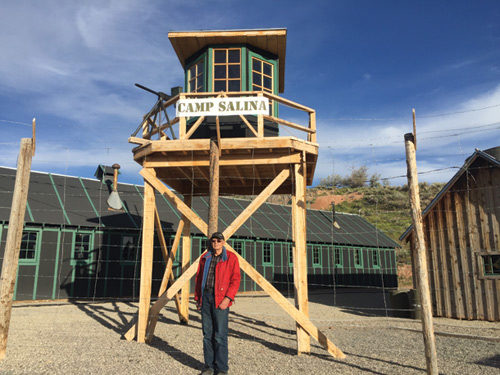Preserving America’s World War II POW Camps

Tami Olsen had never noticed two dilapidated buildings in her small town of Salina, Utah, until the mayor asked her father to restore them. “Dad was like, ‘Okay, awesome, we have a project,’” Tami recalls. “And he just said ‘we.’” Suddenly Tami and Dee Olsen, an octogenarian retired engineer, were deep into a two-year project restoring a World War II prisoner of war camp that once housed 250 German prisoners. Now Camp Salina is open as a museum reviving this mostly forgotten piece of American history. Local families donated artifacts from the camp’s POW days, including artwork and letters from prisoners who kept in touch long after armistice. One of the museum’s prized possessions is a jewelry box a prisoner made from matchsticks and Popsicle sticks.
Letters? Gifts? Visitors are often surprised by the friendships struck up between locals and POWs. But this wasn’t unique to Salina. All over the country, in more than 550 camps holding 425,000 enemy combatants, Americans and their prisoners forged bonds.
“Prisoners brought to this country were treated quite well,” says Arnold Krammer, history professor and author of Nazi Prisoners of War in America. “They weren’t put in concentration camps. Camps were dictated by the Geneva Conventions.” It helped that many Americans had German roots. “So many Americans are of German heritage. They were so much like us racially, and our languages are quite similar.” In contrast, Japanese prisoners were generally isolated.
Since healthy young American men were away at war, prisoners were vital for harvesting crops and doing other hard physical work. Farm labor proved easier than fighting, and the food was much better. Karl Heinz Oehlmann wrote home to his family from Camp Opelika, Alabama, in 1943, practically gushing about the food: “We have cake almost daily, all kinds of fruit, Kellogg’s flakes with milk, roasts, salads, real coffee, crackers, etc. I often think how all of you would rejoice, and how urgently the children need it all. Today we have 3 large, fat pancakes and an omelet just as a side dish.”
Prisoners felt guilty about eating so well. “It’s hard to believe, but while people were starving back in Germany, we were using flour to line our soccer fields,” Josef Krumbachner, a POW at Camp Como in Mississippi, said in an oral history interview.
Why was our enemy treated with such kindness? The U.S. military was concerned about its 94,000 American prisoners in Germany, Krammer says. “We felt erroneously that as well as we take care of their prisoners, they’ll take care of ours.” He paints a surprisingly pleasant picture of the life of a German POW in an American camp, including garden clubs, dances with local girls, educational programs, lunches with farm families, even permission to drink alcohol.
This is an excerpt of an article featured in the May/June 2018 issue of The Saturday Evening Post. Subscribe to the magazine for more art, inspiring stories, fiction, humor, and features from our archives.
Teresa Bergen is a Portland-based writer who specializes in travel. She’s the author of the book Easy Portland Outdoors (Reedy Press, 2018).
